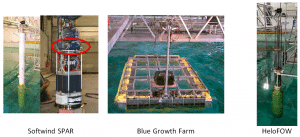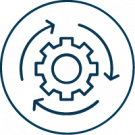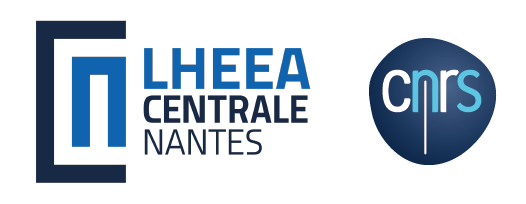
Background
Marine Renewable Energy (MRE) systems include advanced control functions to optimize their power take off efficiency. On floating wind turbine, the hub orientation, the torque on the rotor shaft, and the pitch of the blades are continuously updated. The target values are calculated with control laws which take into account wind direction and speed and the floater motions. For wave energy converters, power take off efficiency can be improved by adjusting dynamically, in real time, the resistive torque on the generator shaft according to the incident waves and the system motions.
The hydrodynamic facilities of Centrale Nantes can generate controlled conditions of wind, waves and current. It enables researchers and engineers to carry out tests on model scaled MRE systems. Power Take Off simulation and control at model scale is one of the main issues for experimental modelling of MRE systems.
The proposed cRIO-EMR project aims at equipping our models with an embedded controller able to manage data acquisition and real time control of actuators. The controller records the signals from the sensors, calculates the target values according to the specified control laws and measurements and eventually drives the motors and generators. Its real time operating system guarantees the deterministic execution of the applications.
Scientific advances and innovation
Centrale Nantes has already implemented complex servo control on wave energy converters models but the control calculations were processed on a desktop computer on the wave tank side. The controller suggested in the cRIO-EMR project will be set up in a waterproof box and mounted on the models. It will be driven by a remote software application through a wifi link, reducing the number of cables between the model and the bridge and therefore their influence on the model’s motions.
Expected technical and economic impact
With the cRIO-EMR project, the Experimental Hydrodynamic Team of Centrale Nantes can provide the MRE developers with an innovative tool to validate servo control strategies during reduced scale tests. This new system completes the set of diagnostic tools associated to Centrale Nantes Hydrodynamic Facilities and opens new possibilities of services.
The device will be used in the scope of the WEAMEC SOFTWIND project.
Key project milestones
- 2018 June to September - Derisking study with a borrowed controller
- 2018 October - Final definition and equipment order
- 2018 November (1st Softwind test campaign) - First tests using the controller
Results
The CrioEMR project, funded by Weamec, enabled the Lheea laboratory at Centrale Nantes to equip itself with an on-board controller to ensure measurement and servo control on models tested in wave tanks. This equipment was used in particular in the development of Softwind, a new means of testing to represent the aerodynamic forces on floating wind turbine models and to test their control laws. This system, developed in 2019, was qualified and validated during the Softwind SPAR campaign in early 2020. Since then, it has been implemented for the Blue Growth Farm trials, a multifunction platform combining aquaculture, floating wind turbines and wave power systems, as well as for Helofow tests, SPAR float of a floating wind turbine including measurement of structural internal forces. It allows the laboratory to broaden its testing capacities and to position itself on new research projects by proposing innovative testing techniques.







